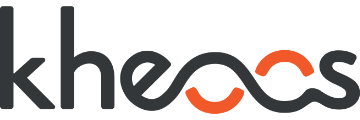An Industrial Paradox That Costs You Money
In every industrial warehouse, spare parts inventories create a recurring dilemma:
On some sites, certain references are in excess, tying up cash flow and taking up valuable warehouse space.
On others, the exact same references are in shortage, sometimes stopping entire production lines.
The result? Companies keep buying new parts that already exist elsewhere—simply because their inventories are fragmented and invisible.
This is where parts pooling comes in: a new approach that transforms dispersed stocks into a collective, optimized, and living resource.
Parts Pooling with Kheoos
At Kheoos, we apply the principle of pooling—mutualizing resources—directly to industrial spare parts.
Our solution enables you to:
Identify shared references across sites.
Centralize and optimize your data for a global view.
Facilitate exchanges and pooling of parts and purchases.
Let’s break down these three steps.
Step 1 – Identify Your Shared References
The first step is to make duplicates and hidden opportunities in your inventory visible.
With the power of our AI, we:
Cross-check your internal data with our database of 85+ million references.
Detect parts held across multiple sites or services.
Highlight critical cases:
Surplus on one site, shortage on another,
Duplicates that could be pooled to reduce costs.
By consolidating your inventories in real time, we turn scattered, complex data into a clear and actionable view.
Step 2 – Centralize and Optimize Your Data
Once shared references are identified, the key is to build a consolidated view.
Our platform provides you with:
Visibility on quantities available per site.
Quick access to other sites’ stocks before triggering a new purchase.
Instant identification of internal transfer opportunities, helping you avoid unnecessary spend.
This transparency transforms fragmented inventories into a global asset, where every part can be mobilized exactly where it’s needed.
Step 3 – Facilitate Exchanges and Pooling
Pooling should not stay theoretical—it must translate into real actions.
With Kheoos, you can:
Transfer parts between sites depending on needs.
Pool recurring orders to negotiate better prices with suppliers.
Reduce procurement costs while improving efficiency and resilience.
This collaborative approach goes beyond stock management: it becomes a strategic lever for purchasing and maintenance.
The Benefits of Parts Pooling
Parts pooling generates immediate, measurable value:
Direct savings: fewer unnecessary purchases, stronger supplier negotiations.
Risk reduction: prevent shortages with a global inventory view.
Optimized space and cash flow: less overstock, more liquidity.
Sustainability: an eco-circular logic—using what already exists before producing new parts.
Conclusion: Your Stocks, a Shared Asset
Parts pooling isn’t just about smarter stock management. It’s a new way of collaborating—across sites, services, and even partners.
With Kheoos, your inventories stop being a burden and become a living, active resource:
➡️ less waste,
➡️ more performance,
➡️ greater resilience.
Because a part gathering dust on a shelf in one location can save a production line somewhere else.
So, what if your dormant stocks became your next performance lever?
Would you like to be notified when new articles are published? Fill out the form!




